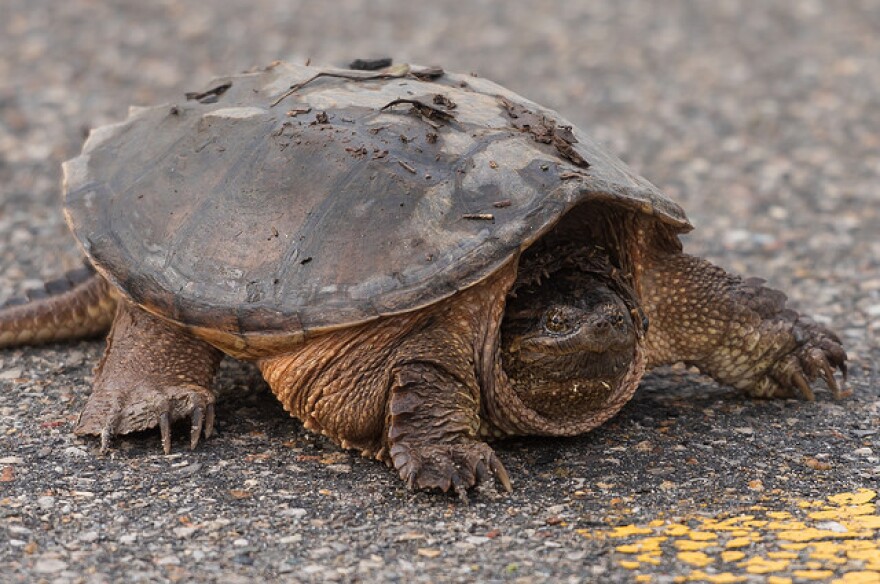New Hampshire benefits from the presence of seven different turtle species. This week on Something Wild we’re taking a closer look at two of the most common species you can find all over the state: painted turtles and snapping turtles.
First off, we have to acknowledge that turtles are amazing, they’re like living fossils. Artist-naturalist David Carrol, has has spent a lifetime studying turtles describes them as "evolutionarily conservative." He said, "they go back to about 200-220 million years ago, and they have hardly changed at all over that entire frame. Meanwhile, flowering plants for example didn’t appear until about 150-thousand years ago." Carroll says that if you found your self on Pangea 200 million years ago you would have no trouble recognizing our turtles ancestors.

These days they tend to be a little smaller. Snappers are easily identified because it looks like a lizard stole a turtle shell. They’ve got these long necks, long tails and a brutish head with a pointed overbite. Meanwhile, the painted is a little more elegant looking, with flecks of blue and red on its shell and yellow streaks on its head and neck. You're likely to see a line of painted turtles basking on a log in the middle of a pond on a hot summer day, while snappers are content to stay submerged much of the time.
But they do have similar nesting strategies. Around late May, early June, females leave the relative safety of their pond or river bed to lay their eggs. Like other turtles, and in line with an ancient turtle tradition, they seek out sandy ground in which to dig their nest. It's ancient in a couple of different senses, too. Each female has made the same journey to the same nesting grounds for her entire life; and likewise generations of turtles have trod these same paths to create a beach-head for subsequent generations.
It can be startling to look a turtle in the eye; it changes you. You can almost see the eons of time these reptiles have endured, it forces you to think about how the landscape has changed in that time. Rivers changing course, ice sheets advancing and retreating, continental drift, all of human history! And every year, as constant as the sunrise (because there's little else that has been as constant in that time), painteds and snappers make their way to nesting grounds in May and June to lay eggs.

Female turtles seek out sandy areas in which to dig holes, deposit eggs then cover them up. A mother turtle does not stick around to guard the eggs. Instead she relies on the power of the sun to incubate them. The only thing she leaves the young turtles with is DNA and the instincts that were passed down to her.
And if the nests remain undisturbed by predators, the eggs will develop all summer long. "It’s a very interesting switch, ecologically," says David Carroll. "In fall when the trees are shedding leaves, plants are going to seed, things are kind of shutting down is actually when the turtle begins its first critical nest to water journey." Carroll pointed out that although painteds and snappers lay eggs about the same time, the emerging hatchlings follow very different time lines. While the snapper hatchlings emerge in the fall to find water, painteds mostly stay in the nest after they’ve hatched and over-winter in the nest, to emerge the following spring.
But whenever the hatchlings emerge, they all begin their first and ancient quest for water. By some instinct or sense that we can’t measure, these tiny turtles intuit their way to the water source that will be their habitat for the rest of their life.
Naturally, both sides of this migration are fraught: for the mothers going back and forth to the nesting grounds and for the hatchlings making their initial journey toward water. They’re susceptible to predation from foxes, coyotes, even crows and turkeys, they’re also confronted with the challenges of human development. Imagine you're a turtle...a plowed field offers no cover or food, buildings must be navigated around and pavement usually indicates cars traveling at high velocity.









